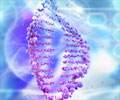Diagnosis, treatment and care of dementia is one of the major concerns in neurology research and associated healthcare programs.

‘The Spherical Brain Mapping (SBM) that performs a projection of three-dimensional Magnetic Resonance (MR) brain images onto two-dimensional maps reveals statistical characteristics of the brain tissue.’





Currently, the use of computational techniques to analyze neuroimaging data has provided us with unprecedented insight of the process of neurodegeneration in AD. Researchers have now proposed a new framework for dementia diagnosis, namely Spherical Brain Mapping (SBM) that performs a projection of three-dimensional Magnetic Resonance (MR) brain images onto two-dimensional maps revealing statistical characteristics of the tissue. These maps can contain both meaningful features such as cortical thickness or surface and radial statistical features of the tissues, such as average, entropy, etc.
The resulting maps perform a significant feature reduction that will allow further supervised or unsupervised processing, reducing the computational load while maintaining a large amount of the original information. This framework achieves a performance up to 91% accuracy in a differential diagnosis involving Alzheimer-affected subjects versus controls belonging to the Alzheimer's Disease Neuroimaging Initiative (ADNI). Additionally, the maps can be visually assessed and interpreted, which can be of great help in the diagnosis of AD and other types of dementia.
Source-Eurekalert















